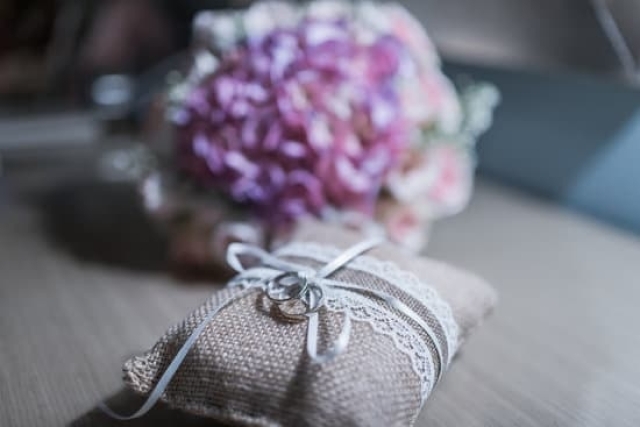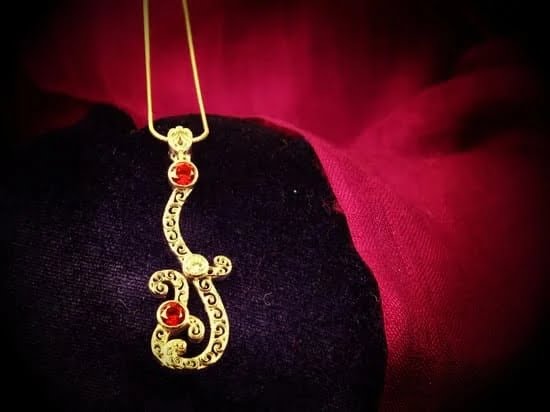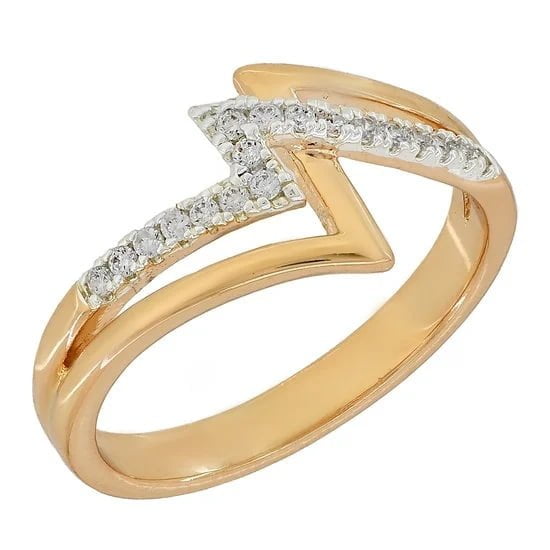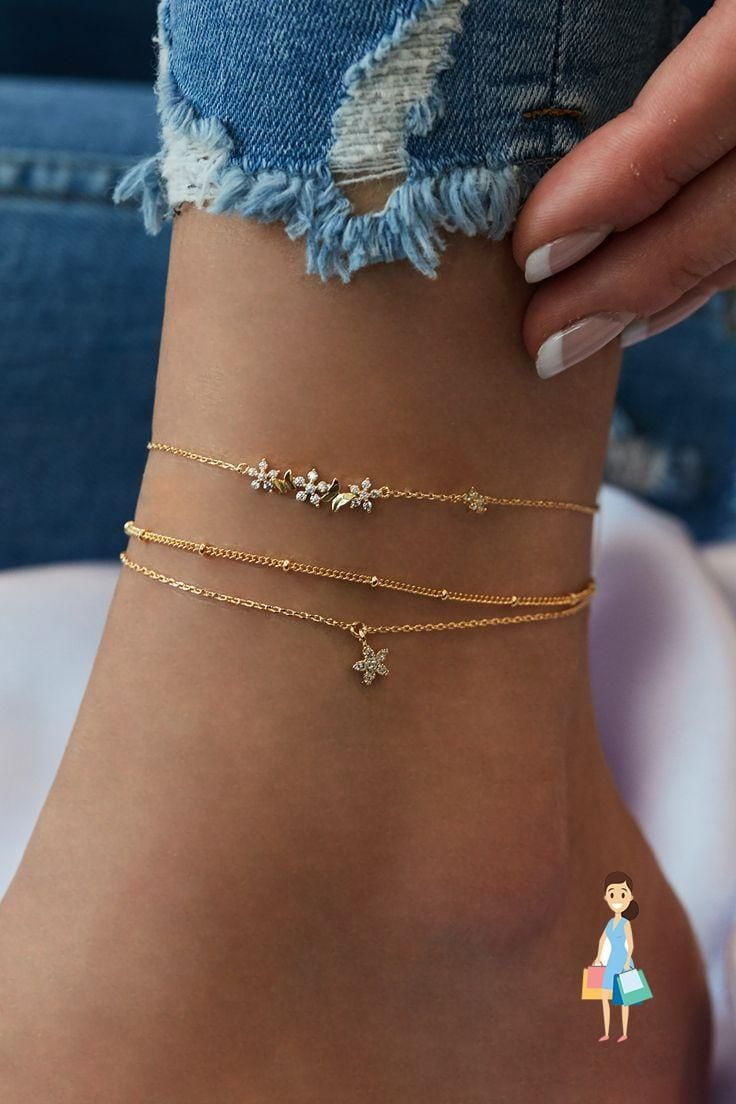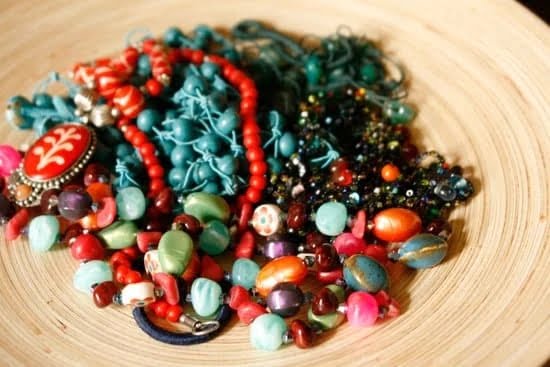Jewelry chains come in many different types such as gold, silver, stainless steel and other metals. Chains can be light or heavy-duty depending on the desired structure and look. Each type of chain requires its own special techniques for repair in order to ensure proper functioning of the chain and protect it from further damage.
When repairing a broken jewelry chain, it is important to take into consideration the type of metal used to make it. If the link is made of sterling silver, mild detergents should be used with lukewarm water to clean it before attempting any repairs on the chain.
It is also important to use glues and adhesives that are safe for jewelry-making; using anything that contains toxic substances could potentially cause further damage or put people at risk for health issues if absorbed through contact or inhalation. Additionally, special tools such as a flat-nose pliers can be useful when reattaching links that have come apart during repairs.
The most common way to repair a light-duty jewelry chain is by reattaching separated links by looping them together again after forming wire loops with the help of pliers. Making sure both loops are facing each other properly is vital to ensure a successful repair job because if not done correctly then the jewelry chain could become too loose over time and lead to more potential issues down the line.
For heavier-duty chains, professional welding equipment may be needed in order to make sure the joints are strong enough so that they don’t come apart easily. However, welding should never be attempted without proper guidance from a trained professional as improper welds could weaken the entire structure or even cause burns from contact with heated metals.
In conclusion, understanding how different jewellery chains need to be handled when it comes to repair is essential for doing a successful job without causing additional damage. Proper techniques must always be taken into account when working with metals used in jewellery-making so as not to risk injury or damage valuable items.
Preparing to Repair the Chain
Before attempting to repair a jewelry chain, it is important to take certain safety measures. These steps are essential in preventing injury when working with metal and sharp edges. First, put on a pair of work gloves to protect your hands from any cuts caused by the sharp edges of broken links.
It’s also recommended to wear protective eyewear such as glasses or goggles to avoid eye damage that may occur when using tools. Additionally, ensure you are in a well-lit area so that you can clearly see the chain and all of its connections. Finally, inspect the chain for any remaining dirt or debris before beginning the repair process.
Gathering Necessary Tools: What is needed to repair a jewelry chain?
After taking all necessary safety precautions, it’s time to gather together all supplies needed for the job at hand. Depending on what type of repair you are making – whether it’s reconnecting disconnected ends or replacing missing links – then you will need various tools and materials. Rejoining broken ends requires round-nosed pliers; whereas missing link repairs need two pairs of flat-nosed pliers and jump rings.
Besides these specific tools, having jewelers cutters and snips on hand can help facilitate quick fixes in cases where clasps have detached from the necklace. Also make sure you have ample wire for small repairs like reattaching loose stones as well as extra jump rings for more extensive fixes like replacing large sections of missing links.
Conducting Repairs: What techniques should be followed when repairing a jewelry chain?
When beginning repairs, always start with examining the length of the broken pieces at either end, noting if they match before moving forward with any kind of reconstruction efforts on the necklace or bracelet link itself. If pieces do not fit together perfectly then your project may be more complicated than anticipated – though this should not deter individuals from attempting their own repairs as many tricks and hacks exist for these common issues.
For each method – be it welding, soldering, cutting out damaged portions – take special care and attention in executing best practices cleanly and accurately so that your finished product retains its original shine and strength after completing projects at home.
Assessing the Damage
In order to properly identify signs of corrosion and wear-and-tear on jewelry chain, you should begin by taking an inventory of the jewelry piece itself. The chain should be inspected for broken links, kinks, fraying, rusts spots, and discoloration. It is important to pay close attention to the condition of the clasping mechanism used to secure the jewelry to ensure that it remains secure when worn.
In addition to looking at visible signs associated with damage inflicted upon the individual links of a chain, you should also consider any visual changes that may have occurred along its edges or on both sides. This allows you to assess if any minor pieces are missing from the chain – a common occurrence many negligence in proper storage and cleaning practices.
Once you have conducted an initial assessment of your piece of jewelry and identified potential areas for concern, the next step is to get a better understanding of what type of material is being used in the construction. Often chains are formed out of metals such as sterling silver or gold; however some designs can also use other materials such as plastics or fine leathers).
Knowing what exactly you are dealing with gives you insight into repair options best suited for restoring it back to optimal condition while also preserving its original look and feel.
Once this understanding has been established, it is time to give more focus on how your jeweler will be tackling specific repairs based on their experience working with similar pieces in the past.
Some issues encountered along critical joint areas within a necklace can often be repaired by replacing affected sections rather than attempting fixes; yet more than often smaller components might not require intricate processes for improvements such as using abrasives for polishing existing surfaces or even re-tipping certain parts along a link loop where clasps are connected.
Overall it is important that have trust in your jewelers ability as they provide trusted consultation services before repairs take place.
Cleaning the Chain
When it comes to cleaning jewelry chain, the safest route is to use non-toxic, gentle options. Before attempting any kind of repair, it is important to clear away any dirt and debris that may be present. For this step, a mild soap and warm water can usually do the trick.
People are urged to stay away from harsh cleaners or chemical solutions as they can cause discoloration or damage the metal of the chain. If the jewelry in question is older or its material makeup is unknown, it is probably best to steer clear of any harsh products and just stick with plain soap and water.
As an alternative option, ultrasonic machines are available for more thorough cleaning jobs on jewelry. Ultrasonic machines make use of soundwaves to create tiny bubbles that vibrate at very high speeds, deep cleaning items made out of various materials including most metals used for jewelry.
This method often does not need to utilize any detergents at all; however, caution still needs to be exercised when testing this method on delicate pieces as it could lead to further damage if used incorrectly.
Finally, homemade solutions have become more popular recently due to their combination of effectiveness and cost-effectiveness. Common ingredients used in these concoctions include baking soda and white vinegar (in equal parts) mixed together until they form paste; this should then be lightly brushed or gently rubbed onto the surfaces of the item being cleaned before being polished off with a soft cloth and rinsed with clean water afterwards.
Due diligence should still take place by checking the metal if it will react negatively with either one or both ingredients before using them on any expensive chains you may own.
Purchasing Replacements
The different types of chain components available to repair jewelry vary greatly. Most commonly, round link metal chains are the go-to option for jewelry repairs and new designs. Round link metal chains come in an array of sizes, styles, and metals so that you can easily customize your jewelry to match your own personal style.
Alternatively, many people prefer box chain links, which are square panels linked together tightly in a uniform pattern. Box chain links are great for heavy-duty bracelets and necklaces that need extra strength compared with round link metal chains. For pendant holders and earring posts, barbell shaped or circular eye pins tend to be preferred options as they provide a secure way for turning jump rings into loops for hanging post or hoop-style earrings.
Sizing & Measurements: How does one determine the correct length for the new jewelry chain?
The best way to measure for the correct size when repairing jewelry is to begin by measuring against an already existing length from a completed piece of jewelry that fits you properly.
If you do not have an existing piece of jewelry that is similar in length to the piece you are repairing, then you will need to measure directly on your body where the finished product would be worn around your neck, wrist or finger – depending on the type of repair at hand.
It’s also possible to use measuring tape if necessary; just make sure it’s accurate. If using a digital caliper is best as it often carries additional accuracy when measuring small parts like clasp ends and jump rings which tends to come in handy more times than not when properly repairing smaller anklebracelets or children’s pieces of jewelry.
Troubleshooting: What are some tips for making tight connections between components?
When connecting components it’s important that all connections start off with smooth surfaces free from any imperfections such as dirt or residues left behind from prior uses as these will most certainly result in weak connections over time with increased chances of breakage occurring after short periods of wear and tear.
A great tip is ensuring that all materials used during any type of connection are pure and durable in order to achieve maximum strength readings placed throughout testing methods conducted before releasing any final product versions out into market places such as those found online related shops worldwide.
Additionally applying tiny amounts of super glue (or similarly strong adhesive) between clasps systems prior closure can help reinforce strength values verifying bonding levels before releasing products into finalized marketplaces too as this will help keep all components securely locked together once completed during customer use periods afterwards./.
Soldering the Chain
When it comes to repairing jewelry chain, a torch and soldering kit is your best bet. A torch is a tool that creates an intensely hot flame. This flame melts the jewelry and can be used to fix broken pieces back together. When selecting the equipment, it is important to pick items that are designed specifically for jewelry making, as other items may cause damage to the precious stones or metals in the jewelry.
The materials needed for this process include flux, silver solder, a tool called a pickle pot, tweezers, needle-nose pliers and of course, the torch. Flux is a solution applied to the broken edges of the chain before soldering them back together; it cleans any residue from oxidization and ensures that everything sticks together properly without creating any further damage.
Silver solder is a special type of wire which melts at a lower temperature than other metals normally used in jewelry making and should be used for delicate repairs where possible.
The pickle pot helps to dissolve any impurities or excess solder once the piece has cooled down again after repairs are complete. Lastly, tweezers and needle-nose pliers can help move pieces into place when making adjustments or applying heat from the torch during repairs.
Once you have all of your tools ready, you can begin fixing your jewelry chain by placing the two broken ends of the chain onto a fire brick (this helps keep them in place while you’re working). Place some flux on each piece and then silver solder along both ends with care until they are fully fixed back together again.
After this step is complete, dip the repaired chain into your pickle pot so that all impurities are removed before giving it one final inspection for good measure. You can then enjoy seeing your repaired jewelry looking brand new.
The Finishing Touches
Once the jewelry chain has been repaired and is ready to be worn, it’s important to provide added protection. If one wishes to have a shining sparkle on their jewelry without having it become scratched or tarnished, then a protective coating must be applied.
Coatings such as lacquer will help provide a layer of barrier between the metal and the elements that can corrode or damage it over time. However, different metals require different coatings so it’s important to know what kind of metal you are dealing with before applying this coating.
After ensuring your metal type is compatible with your chosen coating, the next step is to apply the protective layer. Depending on what kind of shiny finish one wants for their piece, different techniques are needed. For instance, if one desires a more polished shine rather than matte look, polishing can be used on both lacquered and non-lacquered jewelry pieces. This involves buffing the metal with a soft cloth for maximum luster and minimal scratches.
If your jewelry has gemstones or special finishing that needs extra attention due to being especially delicate or prone to wear and tear, cleaning or sealing can be done as an extra precaution after repair has been made and all polishings have been done.
Speciality cleaners meant specifically for intricate detailing Can be utilized in these cases in order to insure that they are kept nice and bright while retaining their original color and texture like they did prior to when they were damaged or broken.
Caring for Repaired Jewelry
Once your jewelry chain has been repaired, the next step is to ensure you store it properly and keep it clean. To store your jewelry, a soft cloth can be used to wrap around the item and place it in an airtight container or bag. This will provide protection from dirt, dust and other debris which can cause damage over time.
Once your jewelry is wrapped in the cloth and placed in the airtight container or bag, it should be put into a separate drawer away from other items that could cause scratches or dents. For extra protection against dust and moisture, consider placing your jewelry box inside a plastic container with some silica gel packs to absorb any excess moisture that could harm the item.
It’s important to avoid extreme temperatures when storing jewelry since this could give rise to condensation that might cause some of the stones to fall out of their setting.
To help maintain sparkle and shine on your jewelry chain pieces, cleaning products specifically formulated for jeweled items should be used when necessary. Ultra soft brushes can be used as well as a light detergent like dish soap mixed with warm water (you can also use mild baby shampoo instead) to help remove any build up of dirt or oils and restore its luster.
Make sure you rinse off all remaining cleaning solutions completely after use and pat dry with a soft lint-free cloth for best results. Once the item has been cleaned, you can use a polishing cloth lightly dampened with water for additional shine if needed.

Welcome to my jewelry blog! My name is Sarah and I am the owner of this blog.
I love making jewelry and sharing my creations with others.
So whether you’re someone who loves wearing jewelry yourself or simply enjoys learning about it, be sure to check out my blog for insightful posts on everything related to this exciting topic!

